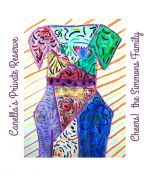

Many moons ago, when I didn’t really know anything about wines, I was looking to bring a bottle for Thanksgiving dinner at our friend’s house. It was going to be a smoked turkey. What wine, I asked the local grocery store wine guy, can I bring to pair with that? After two days of research, he came back with “Pinot Noir!” In those days, Pinot Noir was not so well known in Washington state but he gave me two options one of which I purchased and brought to the feast. Dang! It was a revelation to me. It was a perfect pairing between moist slightly smokey turkey meat and the body and flavors of the wine which I found unusual but quite delicious.
And now, at some point or other, haven’t we all been told to drink Pinot Noir on Thanksgiving? And didn’t the movie Sideways, bring this varietal to our full attention? If you’re not familiar with the declamation by Miles, the main character of the movie, or just not old enough to have seen it, go to YouTube and search it out. It’s called Why Are You So Into Pinot? This is a poignant allegory to Miles’ life that perfectly captures and explains the allure of Pinot Noir. And while you’re at it, continue to watch Maya’s explanation as to why she is so into wine. It’s a heartfelt and moving tribute to the life of wine. Also an allegory. (Jeez, when is a cigar just a cigar?)
Ok, so let’s look at this evocative grape and the wine it produces.
THE ORIGINS IN THE WILD
As so many grapes do, it originally comes from France. It is the great red grape of Burgundy’s Côte d’Or region. They’re thinking it has been in France for over 2000 years, perhaps even prior to the Roman invasion of this area. The story I read was that when the Romans did discover Burgundy, and were towing in their own wines on barges, upriver, they gladly stopped when they figured out that Burgundy produced a wine called Pinot Noir that was far superior to what they were towing. This vine was indigenous to the area and just grew wild.
In the 14th and 15th centuries, the grand Duchy of Burgundy flourished, controlling this area and more that included what are now parts of Belgium, the Netherlands, Luxembourg, and a large portion of northern France. It was a rich and powerful empire, and the great Dukes of Burgundy savored the region’s marvelous wines as part of their opulent lifestyle. And so it goes.
AN UNSTABLE VINE
If you watched the clips of the movie I mentioned above, you will already have an idea of the qualities of Pinot Noir. But let’s get a little more familiar with the specifics of this grape. First off, the vine is described as genetically unstable, meaning that it mutates very easily. There are estimates of over 1000 different types of clones belonging to the Pinot family, some, such as Pinot Blanc, Pinot Gris, and Pinot Meunier, have become well known varieties in their own right. The combination of Pinot Noir’s mutating characteristic and difficult growing requirements i.e. a long cool growing season, and problems like having small tight clusters that are susceptible to diseases, it’s need to be handled gently, and it’s very sensitivity to climate, make this variety a frustrating grape from which to make wine even for Burgundians. This situation is aggravating for Pinot Noir lovers as well because the gap between the high and low quality of this wine is broader than any of the other important reds. The long cool growing season where the fruit ripens slowly and evenly is the secret to making a good Pinot. This preserves its flavors along with its ephemeral characteristics. It’s riskier planting in this climate, but winemakers are willing to take that risk because the pay off is a thing of beauty.
THE MANY STYLES
While there are many styles due to location and microclimates, it is generally of a medium to light body, usually translucent in color with higher acid and lower tannins. The aromas and flavors typically involve red cherries, strawberries, plums and raspberries with some minerality and earthiness when young but as the wine matures can exhibit a variety of complex characteristics including chocolate, game, figs, prunes, mushrooms, some smokiness and floral notes of roses and violets. Beside these actual descriptors, this wine is described in the most sensual terms of all the grapes. It has a supple, silky texture, and is classy and understated with a subtlety and elegance some even describe as sexy. No wonder it has such a devoted following!
A PINOT IN AMERICA
Because of the strong maritime cooling influence along the California coast, particularly in the Napa/Sonoma area, Pinot made a name for itself in this region from the beginning of the 20th century until prohibition shut down most of the wineries in the country. A shame. The exception was Beaulieu Winery which had a contract to produce sacramental wines, not Pinot, but still interesting, making it one of the longest continually operational wineries in the United States. Nowadays many Pinot Noirs are currently being made in this region of California the style of which is richer, with more dark berry fruit and higher alcohol.
Another prominent area in the United States that makes Pinot Noirs is not so far from us in the Willamette Valley in Oregon. David Lett, a pioneer in the Oregon wine Industry, was the first person to plant Pinot Noir vines there in 1966 where he started Eyrie Vineyards with his wife Diana. First, he had spent a year in France after graduating from UC Davis to explore all things wine and, upon returning, he found climate and soils in Oregon that reminded him of Burgundy. Against all advice from the professors at his alma mater who said planting in Oregon would be a disaster, he planted his vines in the red soil of the Dundee Hills. His faith payed off when the Eyrie Vineyards 1975 South Block Reserve Pinot Noir took third place in the Wine Olympiad, first in Paris in 1979 and then 2nd place in Burgundy the following year shocking the French. This caught the attention of David’s friend, French winemaker Robert Drouhin who in 1987 himself, established Domaine Drouhin Oregon. David Lett, aka Papa Pinot, mentored a host of winemakers throughout his life and put Oregon Pinot Noir on the world map of wine. His style of Pinot is of the less (interference) is more variety. He was a promoter of sustainable vineyard farming, no tricks in the winemaking process, and letting the grape make wine that could speak for itself.
PINOT AROUND THE WORLD
There are many other places in the world that make Pinot Noir: the South Island of New Zealand, Australia, the central coast of California, the southernmost part of Chile, Northern Italy, other areas of France, and South Africa to name a few. And now I hear, thanks to climate change, they are planting vineyards in Sweden! Oh dear, even though I’m all for more wine, I’m not sure that’s a good thing…I guess we’ll have to eat, drink and be merry wherever the goods come from. For as long as we can!
There you go. But, hey, what about those Pinot glasses? With that big old bowl and skinny at the top? Well, that allows those complex, delicate aromas to congregate and concentrate and get right up to your nostrils. So, yeah, use them.
PINOT’S BUDDIES
One last thing about Thanksgiving and wine. Sure, get some Pinot Noir, but think also about a nice fruity dry Rosé, like Northwest Cellars Leggiero. Or our ’15 GSM blend Madrigal. Either one would work great with that feast. And I’m thinkin’ both!
That’s all I got, folks. Until next time, don’t forget to eat, drink and be merry!
Cheers!
~ Peggy












0 Comments